BMW officially premieres the iX1
BMW has presented the third model generation of the X1, which is also getting an all-electric offshoot in the form of the iX1 for the first time. The all-electric iX1 xDrive30 is to be offered alongside two plug-in hybrid variants of the X1 shortly after the market launch in October 2022. Prices in Germany are to start at €55,000.
The BMW iX1 xDrive30 is the brand’s first all-wheel-drive electric car in the compact segment. Two drive units on the front and rear axles together generate a power output that, including a temporary boost, is 230 kW. Without the boost, it is 200 kW. The system torque is 494 Nm. The recuperation power is up to 120 kW.
While BMW made the announcement for the iX1 in Europe shortly after presenting the newest X1 for the North American market, the former will not be released in the USA. As a BMW spokesperson explained, the “only model currently planned for the US is the X1 xDrive28i.” It is unclear whether this is because BMW thinks US American customers prefer larger vehicles, however, BMW is also only offering a single option for the X1 in the US, with a single 2.0-liter turbocharged four-cylinder setup. To compare, European customers have more options for the combustion version of the vehicle as well.
The electric motors are the “fifth-generation eDrive technology”, as BMW calls its current generation of electric drive systems. These are current-excited synchronous motors, which are also used in the core of other current electric models such as the iX3, iX and i4. Whether the iX1 has two equally powerful drive units on the front and rear axles or whether the rear drive unit is slightly stronger, as in the other models mentioned, is not clear from BMW’s statement.
BMW gives a range of 413 to 438 kilometres – this had already been known since March, when BMW put a product website for the new iX1 online with the first teaser image. In the premiere announcement, the carmaker emphasises that these are provisional values “based on the vehicle’s development status to date”. Until the final homologation before the start of delivery, these values may still change by a few kilometres.
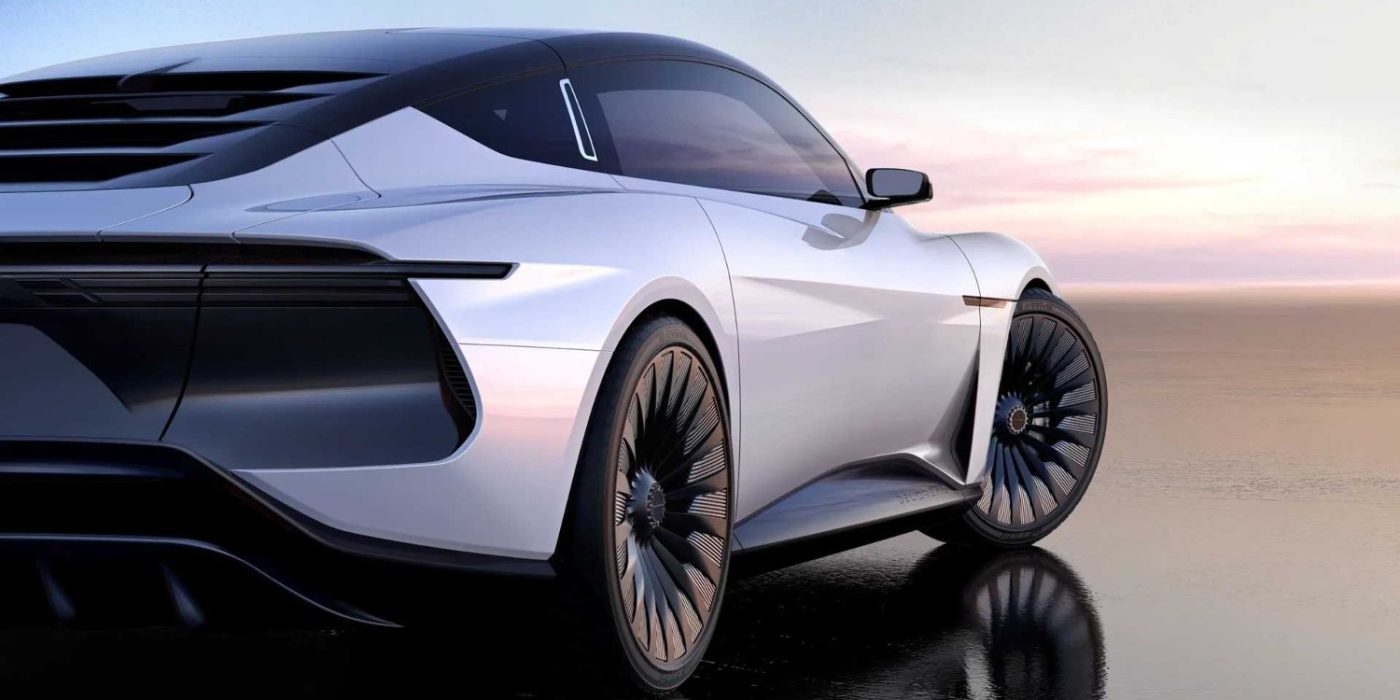
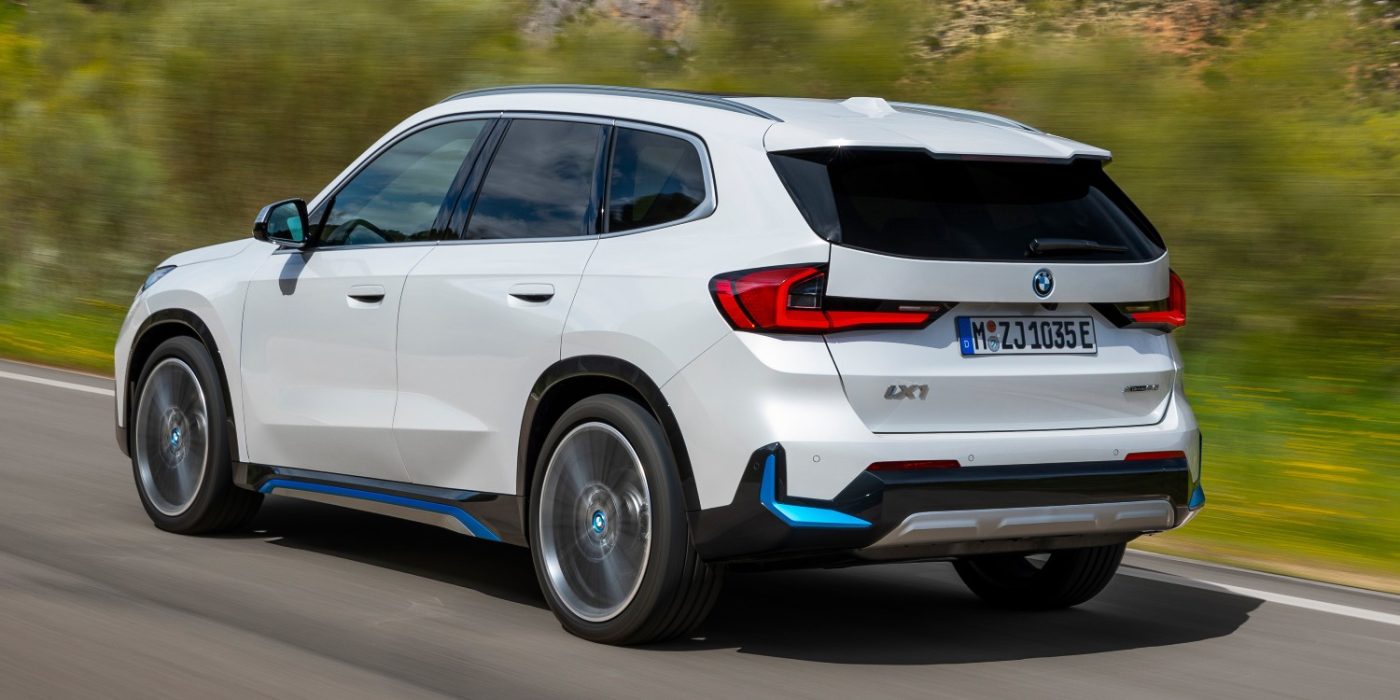
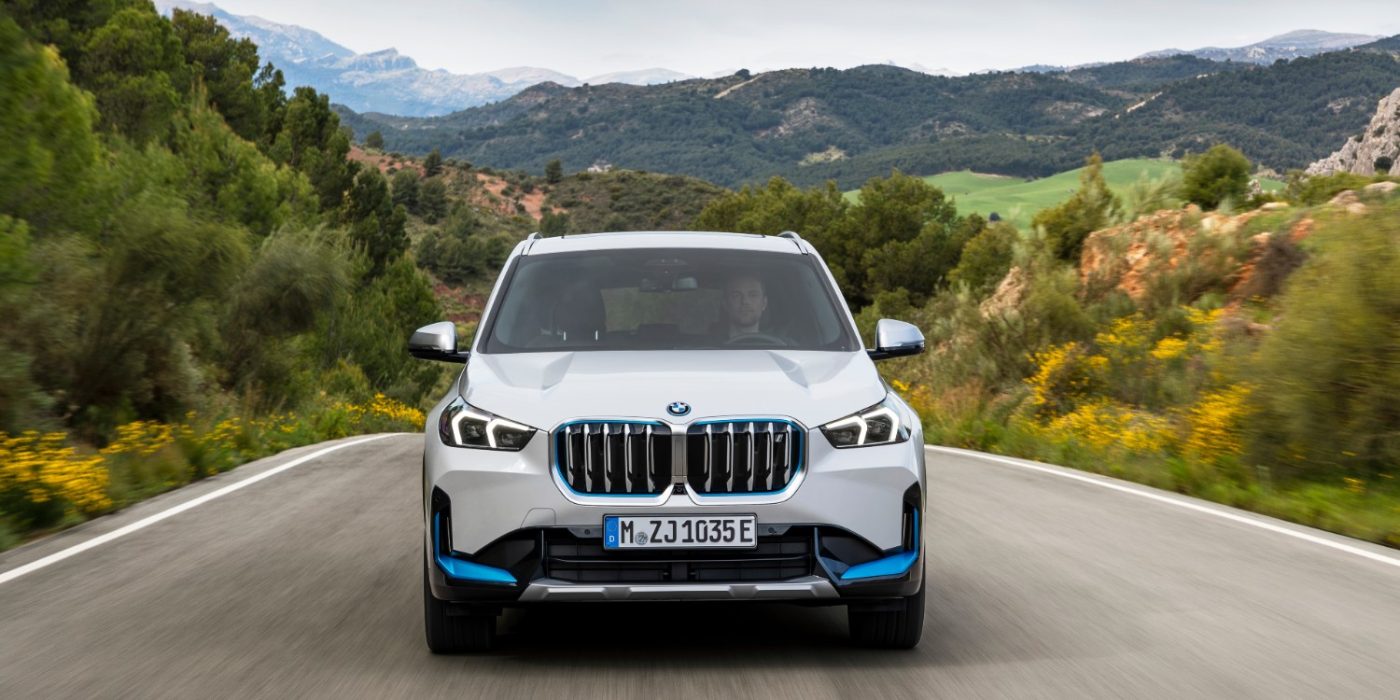
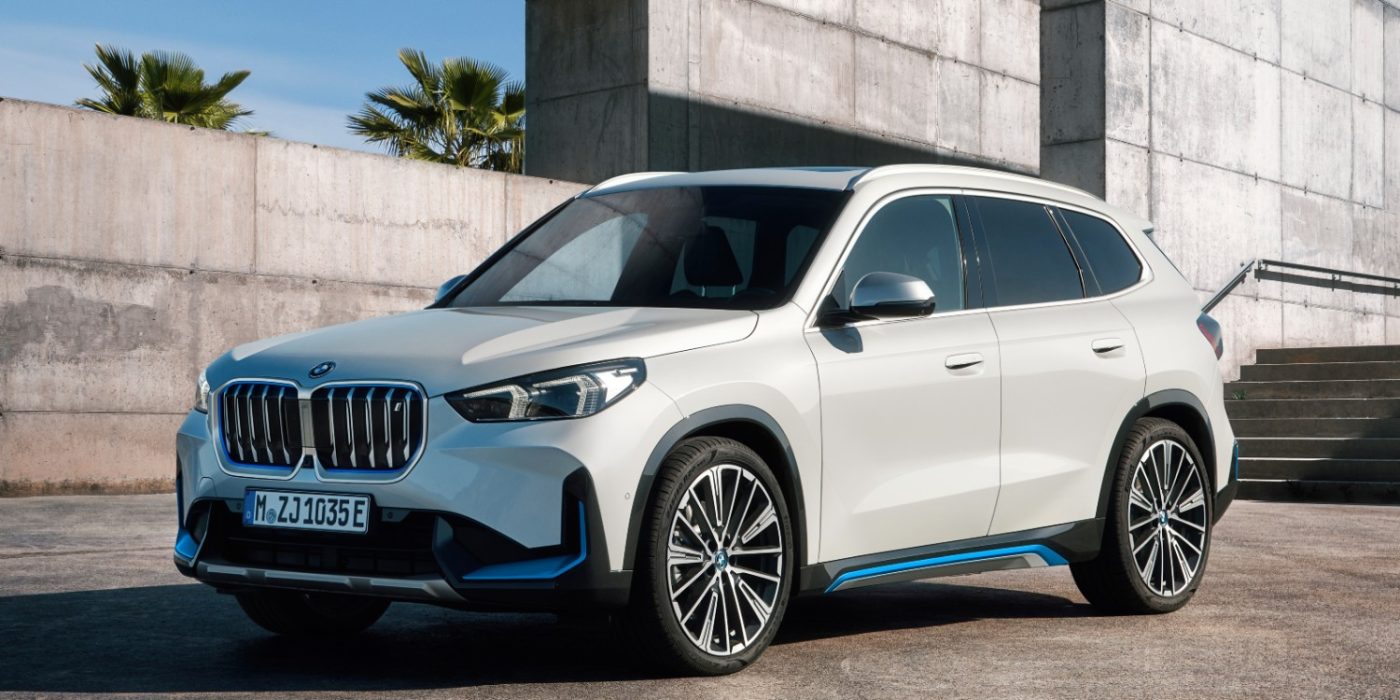
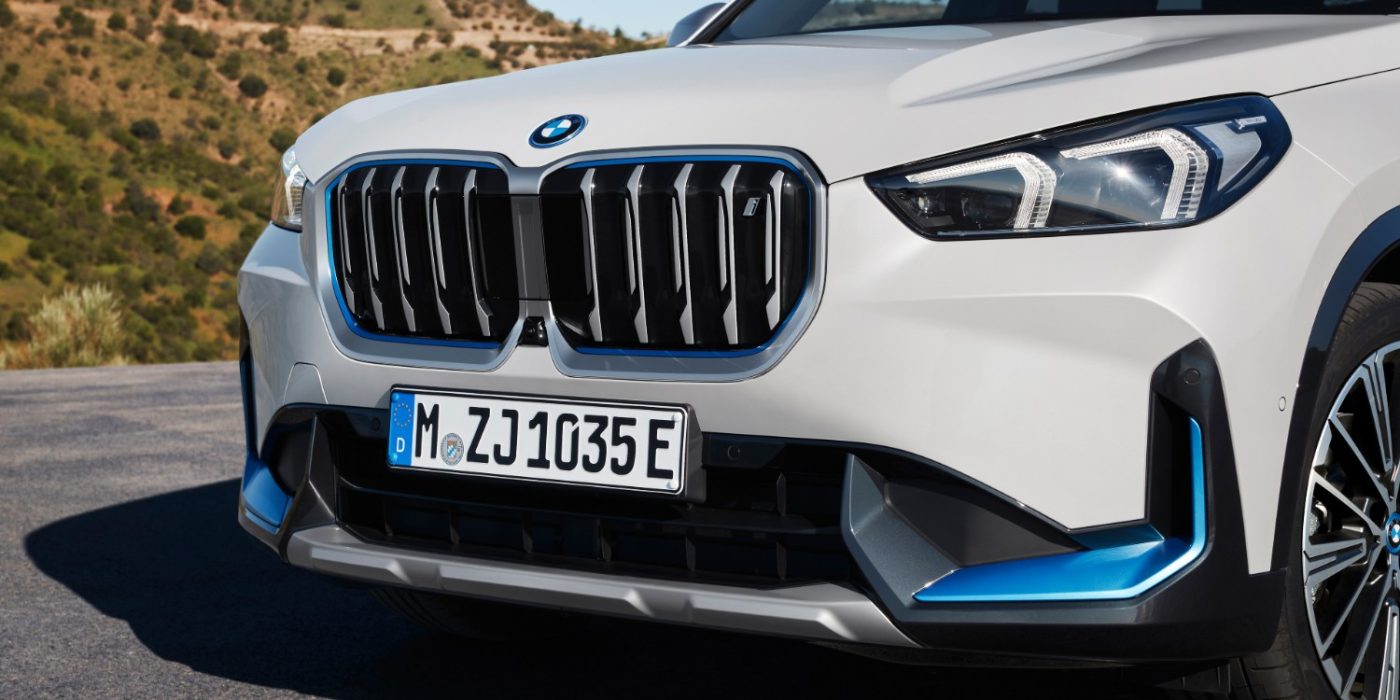
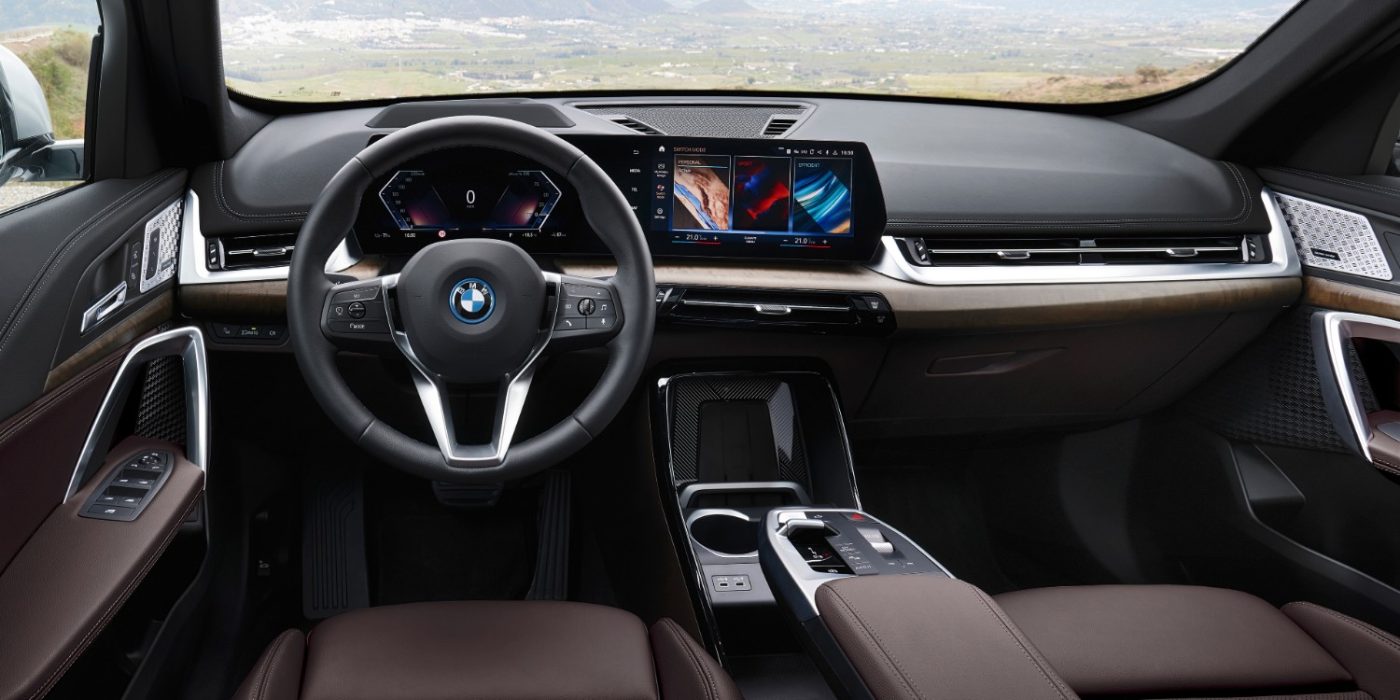
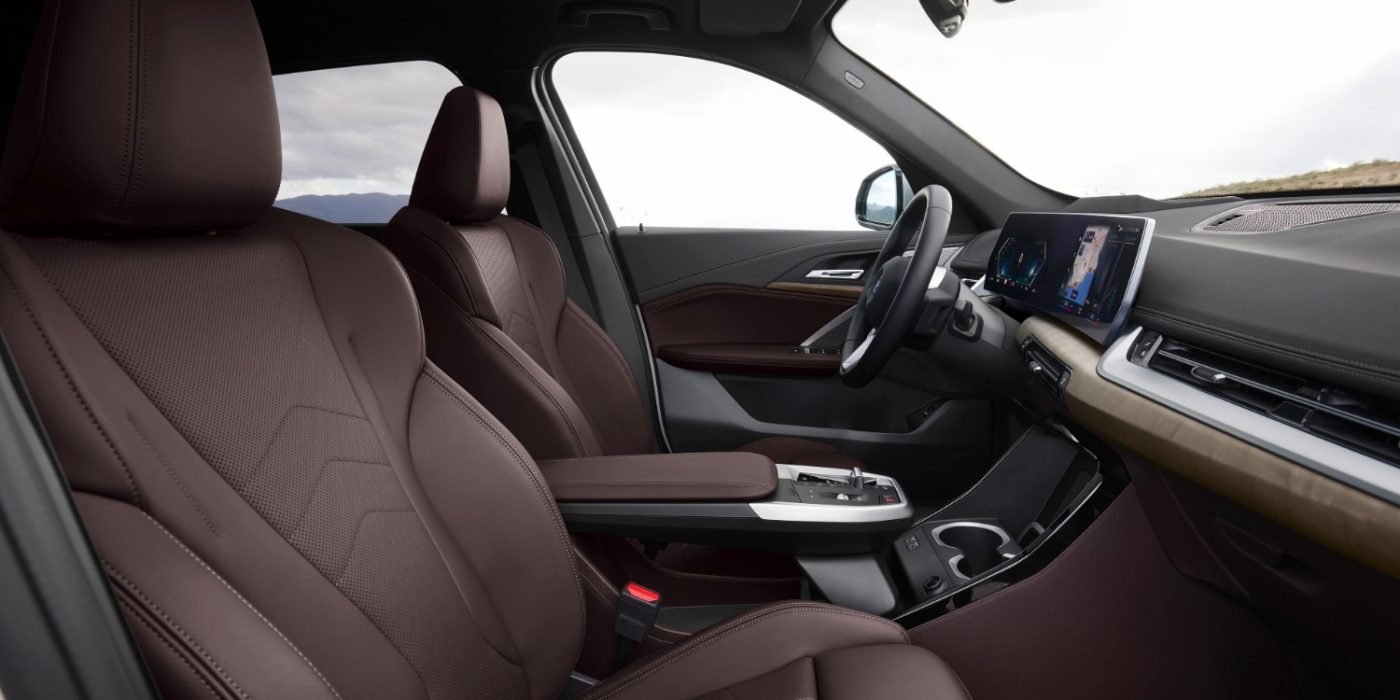
The battery has a usable energy content of 64.7 kWh – based on the data published in March, we had predicted 65 kWh. BMW does not give details on the cell chemistry of the battery, which is integrated flat in the vehicle floor, but it does give the energy density. This is 152 Wh/kg and 199 Wh/l respectively.
The maximum DC charging power is 130 kW. If the maximum charging power is applied, power for 120 kilometres can be recharged in ten minutes. According to the manufacturer, the standard charging process from ten to 80 per cent takes 29 minutes, which corresponds to an average charging power of 94 kW in this window. However, these are also provisional values. The iX1 should also benefit from the developments of the i7 in the charging software: Instead of the “staircase” charging curve, the charging power is supposed to decrease continuously at a higher State of Charge (SoC) – so the charging curve is richer overall, resulting in an even shorter charging time.
An optimised cooling strategy during DC charging ensures a further improved longevity of the high-voltage battery. According to BMW, “overcooling” of the high-voltage storage unit during fast charging is to be prevented by implementing full and partial cooling power phases in the charging process of the BMW iX1. This prevents the occurrence of excessively low temperatures for the cells during fast charging, especially at high states of charge, which in turn offers the potential for short charging times and reduced ageing of the cells in the storage unit.
The iX1 can also precondition the battery before fast charging. The special feature: this not only works with active destination guidance with an automatically scheduled charge stop, but can also be activated manually, i.e. without active destination guidance, according to BMW.
The AC charger of the iX1 is also worth mentioning: the usual 11 kW are installed ex-works, but a 22 kW charger is also available as an option. BMW has not yet mentioned the surcharge, but the charging time can be reduced from 6:30 hours to 3:45 hours.
Shortly after the market launch, two PHEV versions are also to come onto the market, called xDrive30e and xDrive25e. As before, this is a transaxle hybrid: the three-cylinder drives the front wheels, the electric motor (also from the fifth generation) the rear axle. The more powerful PHEV has a system output of 240 kW (of which 130 kW comes from the electric motor), the weaker one has 180 kW (of which 80 kW comes from the electric motor).
The battery is also integrated flat into the vehicle floor. BMW states the energy content at 14.2 kWh. The maximum charging power is 7.4 kW, which is twice as much as in the predecessor. However, BMW does not specify whether the 7.4 kW is achieved in single-phase or two-phase charging – so the practical charging power may be lower in single-phase charging if the shifted load regulation applies. The purely electric range is between 78 and 89 kilometres according to WLTP City.
There is an electrically folding trailer coupling in the X1 and iX1. The combustion engine can tow up to two tonnes, while BMW specifies a towing capacity of 1,200 kilograms for the iX1.
The new BMW X1 is produced at the BMW plant in Regensburg, where for the first time models with combustion engine, plug-in hybrid systems and purely electric drive are produced on one production line.
With reporting by Sebastian Schaal, Germany.
bmwgroup.com, carscoops.com (US market), bmwgroup.com (German pricing, in German)

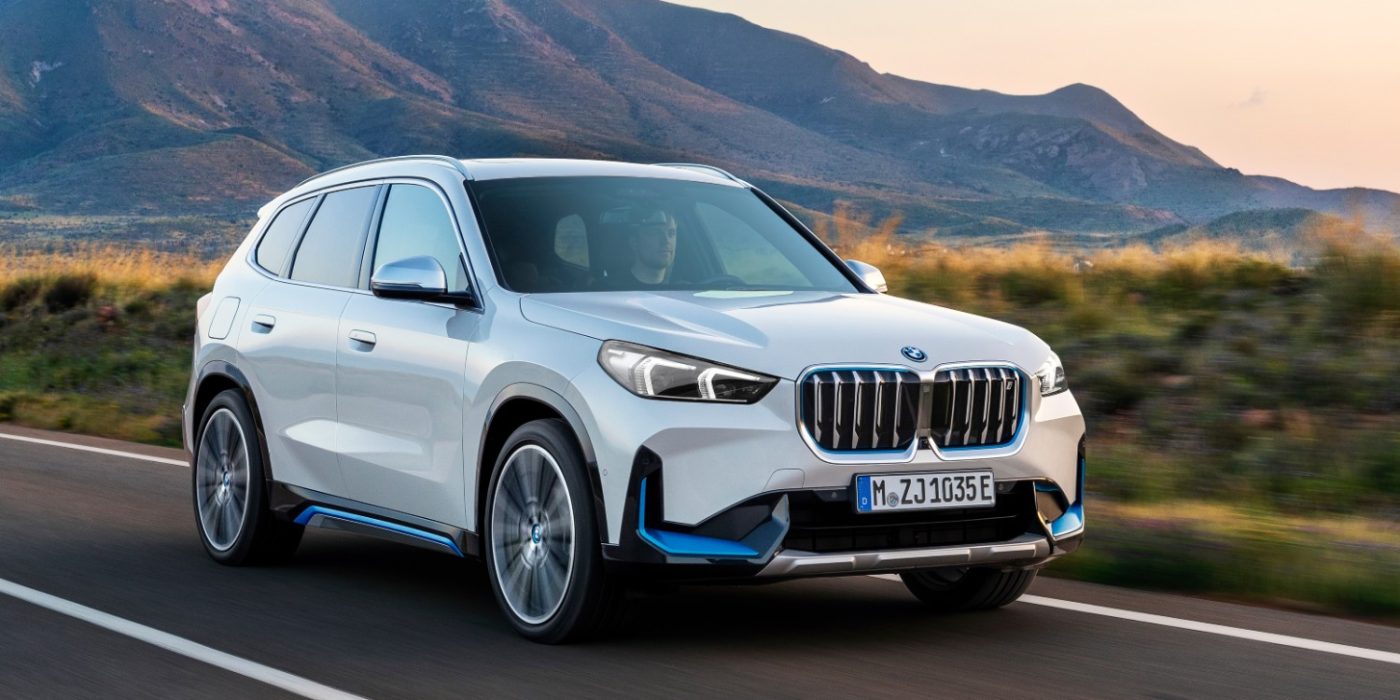

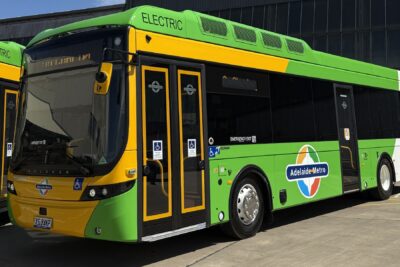

0 Comments